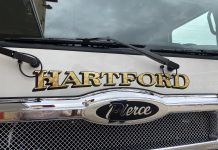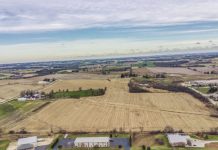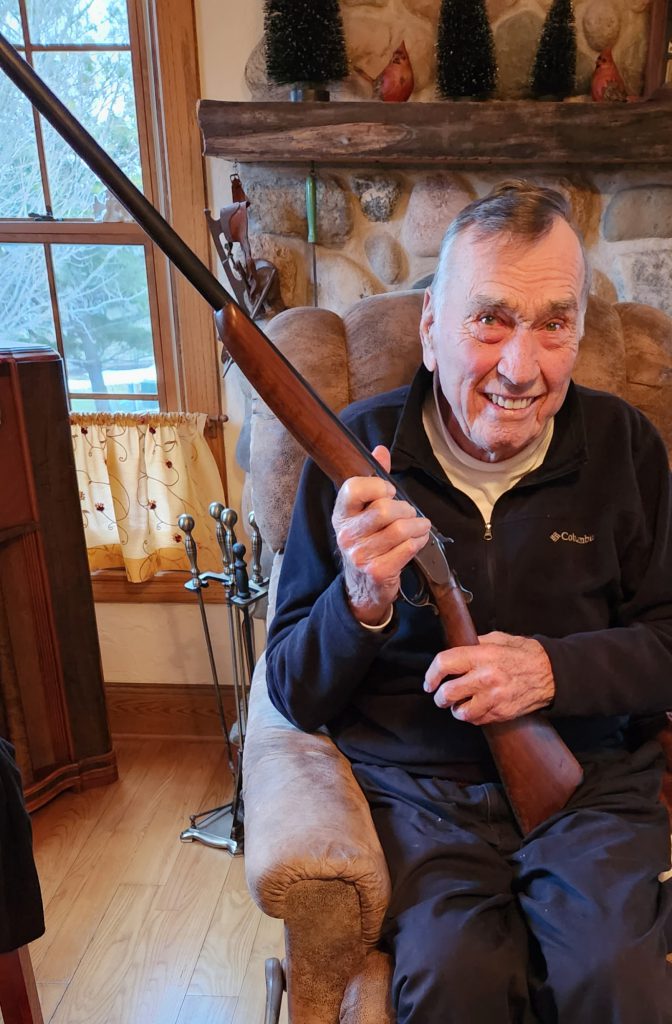Washington Co., WI – For over 15 years, Dave Bohn had been writing down memories of his childhood, growing up on the family farm just south of West Bend on Hwy P. He hopes his writings will preserve the often-overlooked stories of ordinary farmers and everyday farm life in rural Washington County during the Great Depression through the eyes of a local farm boy. Below is a story about Bohn’s hunting adventures during the Great Depression with his brother, Tom, and his Dad.
Click HERE to SUBSCRIBE to FREE local news at
Washington County Insider on YouTube
A word about when the land of Washington County was in the early stages of being farmed when I was a young boy. The land was all laid out in 40 acres square parcels, as it is today when land is bought or sold. Most farms in our area were two 40-acre parcels, so a total of 80 acres. This is what my dad and mom had as I was growing up. That was about all a farmer could handle with horsepower.
Boundaries were marked by a surveyor’s steel stake. Farmers would put a fence of some sort on these boundaries. Dad had a wire fence on wood posts when I was a little kid. Early fences in the area were usually about 5 feet in height with wood posts and a mesh of woven wire squares, approximately 5 inches.
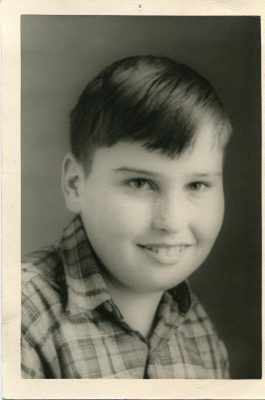
When I was about 7 or 8 years old, Dad got barbed wire and that was also on wood posts. In later years after the War, he was able to get steel posts, when metal was more abundant. It was a transitional time; some farms had the old woven fences and some had barbed wire fencing. The woven wire fences were being replaced with barbed wire, but some farmers still used the old fences. The barbed wire fencing had four single strands of barbed wire with each strand about a foot apart and with the barbs about every 5 inches apart. The barbed wire was to keep the farm animals within the farm boundaries and it was an effective means.
The corner posts were almost always wood posts and they were large, about 10 inches in circumference. There was also a secondary supporting post, maybe 8 feet from the corner post. A diagonal brace went from the top of the corner post to the bottom of the supporting posts. This helped to reduce the tightening pressure of the wire on that corner post.
The fence was called a “line fence;” the fence that marked the boundaries to divide it for different ownerships of the land. The line fence could be moved if the ownership changed, or the parcel was divided in any way. The area on either side of the line fence was not tilled and it usually got to be a wider strip of land, maybe 12 feet total.
It became an area for elderberry, wild raspberries, gooseberries, blackberries, different types of nut trees (hickory nut and butternut trees were the most common of wild nut trees) and even apple trees grew there. Sometimes Mom would send Tom and me down to harvest some berries or nuts, but not too often, as the harvest time was also the time when hunters would be out, and she would worry about us.
This area was also a good habitat for small game animals, such as rabbits, squirrels, pheasants, partridges, and other small game. In addition, the area along the roadsides was also a good habitat for small game.
Pheasants were planted in our area by the state and the pheasants took hold. This probably took place in the 1930’s because prior to that time, there wasn’t really much state help for that kind of thing. There were a lot of pheasants in the 1930s and 1940s. When we were kids, the farmers harvested their hay only twice each year, the first being in mid-July and the pheasants were done with nesting by that time.
They had a good population until the farmers started cutting their hay three times each season, with the first being in mid-June. This was the time that the pheasants were nesting and raising their young and they would do this in the hay fields because there was a good crop of bugs available and that was their main source of food. So, when the farmers started cutting hay earlier, it was detrimental to the pheasant population.
When I was 12 years old, Dad bought Tom and me shotguns for rabbit and pheasant hunting. Mine was a 16-gauge Iver Johnson single-shot hammer type. Tom’s was a 20-gauge single-shot hammer type. He bought them at Barnes Hardware on the north end of downtown West Bend (I think it was on the NE corner of 33 & Main – there’s a tavern near there now). I don’t know how much he paid for them. I would guess $10-15.00 each. Both my son and my grandson used my Iver Johnson when they were boys for rabbit hunting. It was my first gun, so it was something special to me and I still have it.
In the fall, during hunting season, my brother and I would take our Iver Johnsons and go hunting two or three times each week. Sometimes we would go to the swamps and the woods to hunt. Other times, we would walk down to the line fence on the boundary of our farm. Tom would walk on one side of the line fence, and I walked the other side.
This would flush the pheasants up so we could get a good shot at them. Usually, we would only get a pheasant or two, as the state had a limit at that time. We would bring them home and clean them and Mom would fry them like chicken for dinner. We had no means of refrigeration at that time, so we ate them right away.
When we started to hunt, Dad bought Tom and me each a beagle hound dog to help track. We gave them a name. Tom’s dog was named Mitzi and mine was named Bowser. Hound dogs would chase rabbits as they had such a keen sense of smell. They would smell where the rabbit had recently been by the smell of the footprints on the grass or the ground. Hound dogs would follow the rabbit by that smell, howling as they followed the rabbit, in order to get the hunter near to the rabbit.
Rabbits always run in a circle and have a small area that they stay in. They don’t like to leave this area, even when being chased by a hound dog. Mostly, we hunted rabbits in the swamp or in our neighbor, Louis Schloemer’s woods during the fall. But the season was open then, so once in a while, if the weather was good, we may have hunted in the winter.
Dad had a beagle hound named Spotty. He was a good hound for chasing rabbits, much better than Mitzi & Bowser. We could only hunt with him for a year or so, as Spotty was too old when Tom and I started hunting. All our hound dogs were only used for hunting though; they weren’t pets.
Most dogs would also trail skunks and when they got too rough with the skunk, the skunk would release their scent. If the smell got on you, it would last for at least a week, or quite some time. This happened to our hunting dogs. They would smell for a week or more before it would wear off. Luckily, they were never allowed in the house. But one time, I do remember our pet dog, Skippy, got sprayed by a skunk, and she was evicted from the house in a hurry.
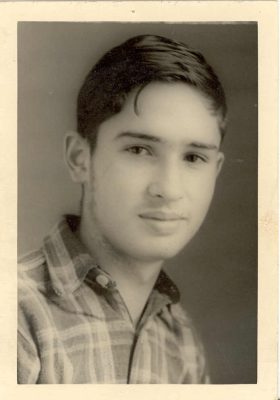
When we were a little younger, maybe 8 or 9 years old, Dad had bought Tom and me BB guns. They weren’t strong enough for hunting but we did use them to shoot sparrows because they ate the grain that was for our chickens. Usually, the bb’s didn’t hurt the sparrows, they just bounced off their feathers, but they did scare the sparrows away.
Earlier in time, during the mid-1930s, Dad and several other guys from the area would drive to Rio, Wisconsin (near Portage) in the early morning to hunt rabbits. There were many of them in that area and they were damaging the farmers’ crops so they wanted the population reduced. Dad and several close neighbors, such as Lester Nehrbass, Ray Spaeth, and Hugo Minz, would come back the same day with about 20 -30 rabbits a piece, as there was no limit on them. I don’t think you needed a license to hunt at that time and it was a good food source for our family.
During the time when I was a kid, deer were not present in our area but I did go deer hunting shortly before I went into the service. I went up north, to a small town, Long Lake, Wisconsin (southeast of Eagle River) with Dad, Hugo Minz and Joe Metz. We went to some land that was owned by Clarence Peters, who was originally from a farm in our area. Clarence was nine years older than me and he moved up to Long Lake because the government was selling land cheaply up there.
I was about 16-18 years old then when I went deer hunting. It was during the War years and ammo was rationed. We had been out hunting and I knew that I only had four bullets left. When I saw a deer, I shot four times and the deer just stood there. I never was a very good shot.
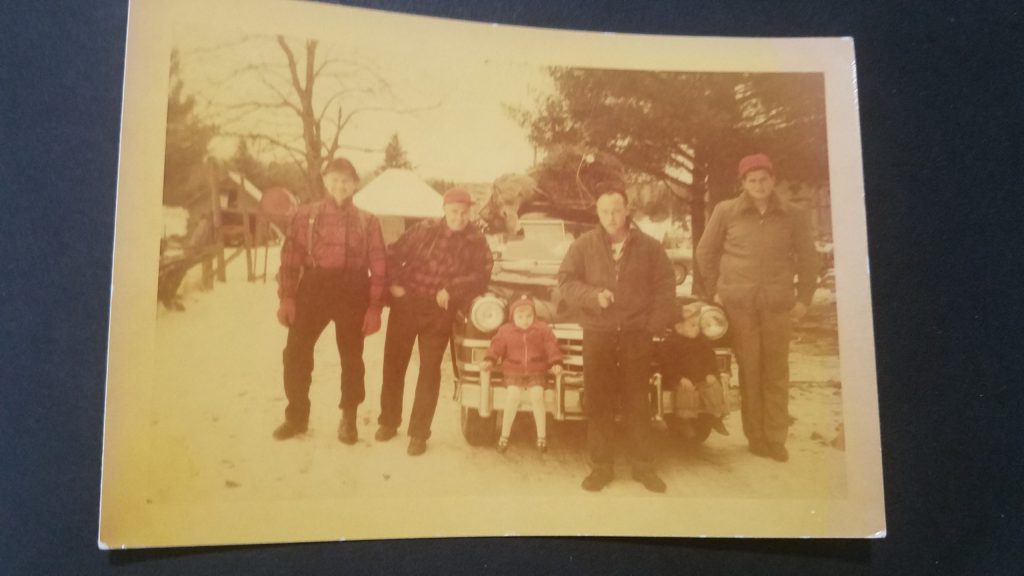
Dad continued to hunt in Long Lake but just like some guys now, he went up more to visit with his friends, than to hunt. My opinion is I don’t think that they hunted that much, although there are some old photos of some big bucks from that area.
During the time of the Great Depression when I was a boy, most farmers had shotguns that they used primarily for hunting. It was more of a sustenance tool, as the times were not good and hunting game was part of that sustenance. Times improved after WW II and hunting became more of a sport, than for food. As I got older, I wasn’t much of a hunter, but I did trap shoot when I was in my 30s and 40s and did try to instill the love of hunting in my sons. My son and grandson continue to enjoy hunting.




